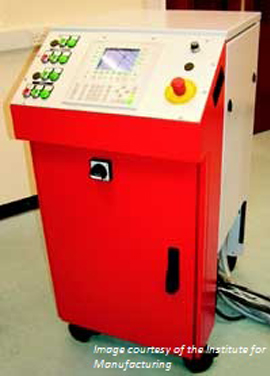High brightness lasers are capable of operating with smaller spots, longer focal lengths and at greater distances than conventional sources. These physical properties should allow the laser to be used in novel ways, with unique processing mechanisms.
Project aim
High power end-pumped fibre lasers are a new technology evolving from the telecommunications market. To be suitable for materials processing, they need to be scaled up and ruggedised. The first phase of the project is to specify and support the development of a 1kW industrial laser, with industrial partner SPI. Phase 2 of the project will investigate traditional and novel application of the laser as a materials processing tool.
Optical benefits
Improved beam quality offers new processing possibilities and gives many processing benefits including:
- Smaller focal diameters: enabling finer features and lower power usage.
- Compact processing head: enabling reduced cost in optics, lower mass of processing heads and thus access to difficult locations.
- New processing head designs: enabling large stand-offs, less damage and more stable processing.
Physical benefits
Fibre lasers have physical advantages over more traditional laser configurations due to their compact design, higher efficiency and longer life. In addition, they are maintenance free, offer rapid installation and as a result have significantly lower costs of ownership.

The technology
Laser brightness is defined as: ‘Power per unit area, per unit solid angle’. A high brightness laser is therefore one with low optical divergence and high energy. It could be said that the high brightness laser is one which most approaches the performance of an idealised beam.
The results
- The first generation laser has been installed. Further specification revisions will be incremental as the limits of the laser are explored.
- Processing trials are beginning and are expected to demonstrate the potential of the fibre laser to influence the future of material processing. Early results indicate that the laser brightness levels are higher than any other commercial laser source.
This research collaboration was undertaken between 2001-2007 with SPI Lasers and funded by the EPSRC .
Contact Professor Bill O’Neill Contact Dr Martin Sparkes
